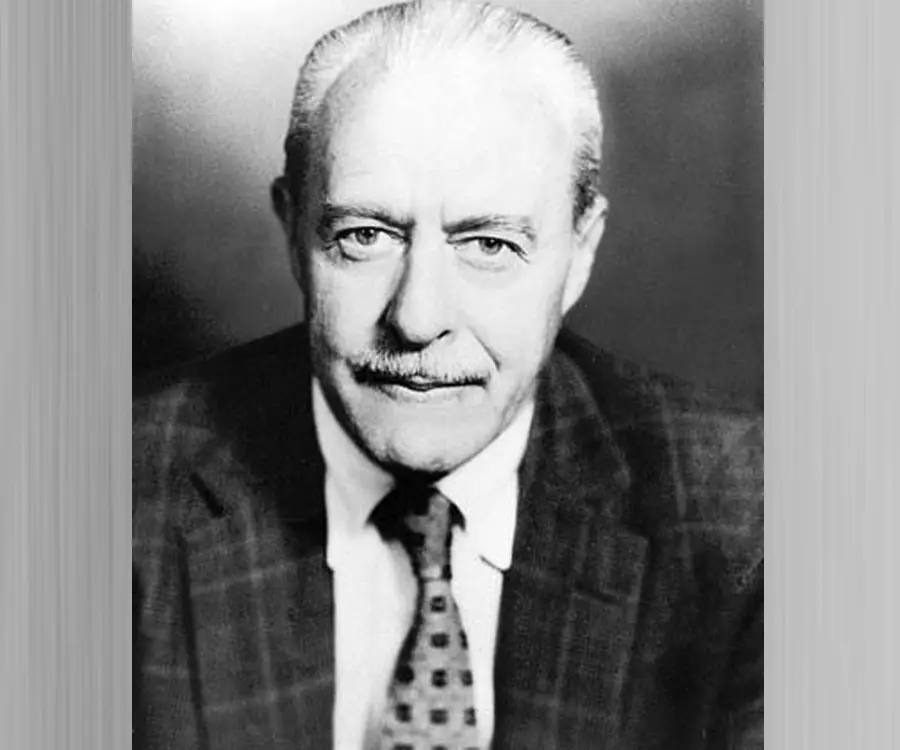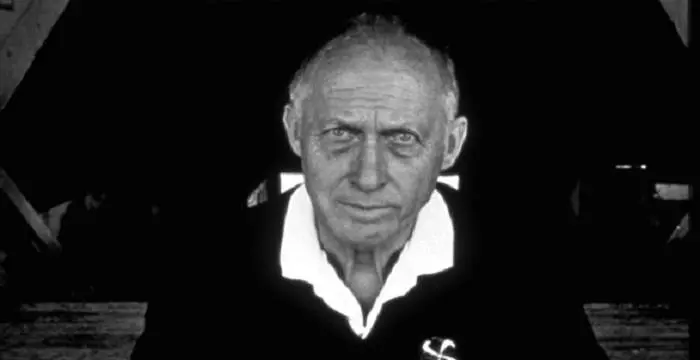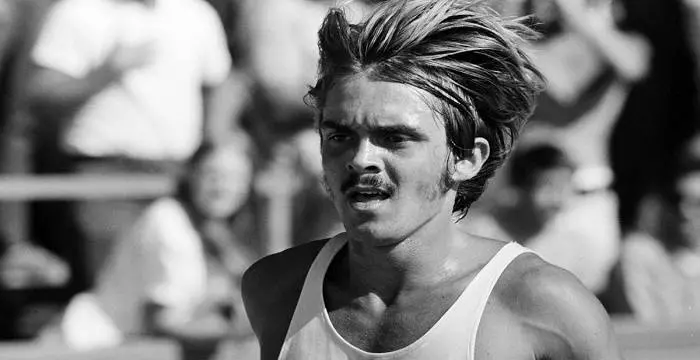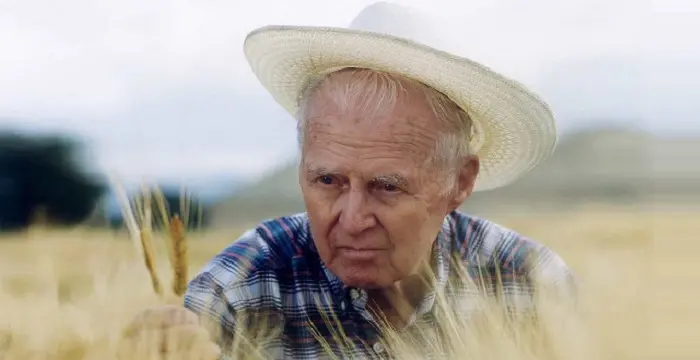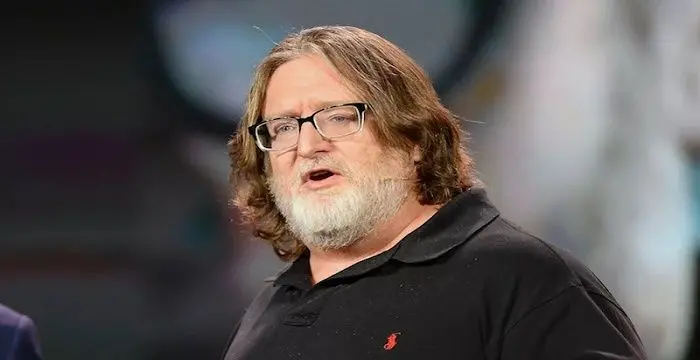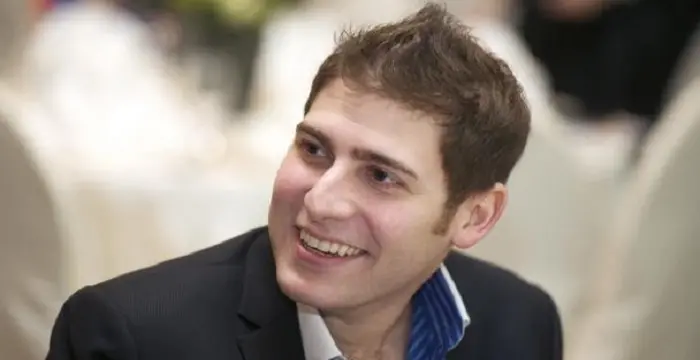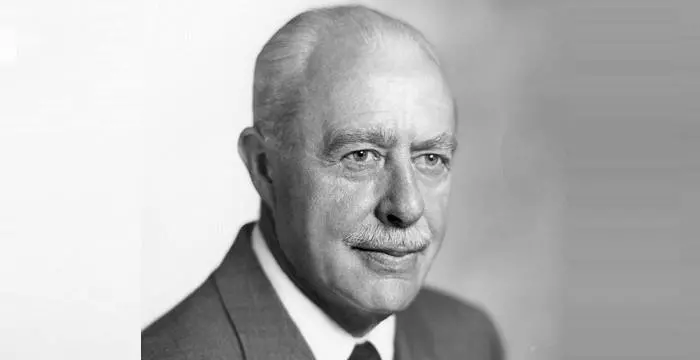
Walter Houser Brattain - Physicists, Timeline and Life
Walter Houser Brattain's Personal Details
Walter Houser Brattain was an American physicist who jointly received the ‘Nobel Prize in Physics’ in 1956
| Information | Detail |
|---|---|
| Birthday | February 10, 1902 |
| Died on | October 13, 1987 |
| Nationality | American |
| Famous | Princeton University, University Of Minnesota, University Of Oregon, Scientists, Physicists |
| Spouses | Emma Jane (Kirsch) Miller, Keren Gilmore |
| Siblings | Mari Brattain, R. Robert Brattain |
| Known as | Walter H. Brattain |
| Childrens | William G. Brattain |
| Universities |
|
| Notable Alumnis |
|
| Birth Place | Xiamen, Fujian, China |
| Gender | Male |
| Father | Ross R. Brattain |
| Mother | Ottilie Houser Brattain |
| Sun Sign | Aquarius |
| Born in | Xiamen, Fujian, China |
| Famous as | Physicist |
| Died at Age | 85 |
// Famous Physicists
Henry Cavendish
Henry Cavendish was a theoretical chemist and physicist, renowned for discovery of hydrogen and calculation of the mass of earth. To know more about his childhood, profile, timeline and career read on
Walter Kohn
Nobel Laureate Walter Kohn was an Austrian-born American theoretical chemist and physicist. Check out this biography to know about his childhood, life, achievements, works & timeline.
Nikola Tesla
Nikola Tesla was a Serbian-American inventor, best known for his development of alternating current electrical systems. This biography of Nikola Tesla provides detailed information about his childhood, life, achievements, works & timeline.
Walter Houser Brattain's photo
Who is Walter Houser Brattain?
Walter Houser Brattain was an American physicist who jointly received the ‘Nobel Prize in Physics’ in 1956 with fellow scientists John Bardeen and William Shockley for their landmark invention of transistor. While Brattain and Bardeen were recognised for their invention of the point-contact transistor, Shockley was credited for inventing junction transistor. Brattain dedicated most of his research career in investigating surface states, especially atomic composition of a material’s surface that generally differs from atomic composition of its interior. He along with Bardeen worked on a project at the ‘Bell Laboratories’ to comprehend semiconductors in a better way so that these can be applied properly in amplifying signals. Investigations of the duo led to the path-breaking discovery of the first transistor in 1947. They shared credit with William Shockley, their supervisor who almost right away invented the junction transistor. In no time transistor became a replacement for bulky and expensive vacuum tubes leading to its widespread application in electronic devices. This breakthrough invention paved way for a virtual revolution by way of other developments in the field of electronics like fax machines, computers, satellites and cell phones. Brattain served as visiting lecturer at ‘Harvard University’ and at ‘Whitman College’ and upon retirement from ‘Bell Laboratories’ he served as adjunct professor at ‘Whitman College’. He also jointly received the ‘Stuart Ballantine Medal’ (1952) and the ‘John Scott Medal’ (1954) with Bardeen.
// Famous University Of Oregon
Bill Bowerman
Bill Bowerman was an American track and field coach, winner of the Oxford Cup and co-founder of the Nike, Inc. Check out this biography to get detailed information on his life.
Phil Knight
Phil Knight is the co-founder of Nike, Inc., one of the world's largest suppliers of athletic shoes and apparel. This biography of Phil Knight provides detailed information about his childhood, life, achievements, works & timeline
Steve Prefontaine
Steve Roland "Pre" Prefontaine was a renowned American middle and long-distance runner. This biography profiles his childhood, family, personal life, career, etc.
Childhood & Early Life
Walter H. Brattain was born on February 10, 1902, in Xiamen, Fujian, China to Ross R. Brattain and Ottilie Houser Brattain. His father was a teacher at the ‘Ting-Wen Institute’ in China while his mother was a talented mathematician. His sister was Mari Brattain and brother was R. Robert Brattain who became a physicist.
In 1903, when he was still a toddler, he returned to the US with his mother, while his father joined them later.
He spent several years of his childhood in Spokane, Washington. In 1911 he moved with his family to a cattle ranch near Tonasket, Washington. He attended three high schools in Washington - first the ‘Queen Anne High School’ in Seattle (1915-16), then the ‘Tonasket High School’ in Tonasket (1916-18) and thereafter the ‘Moran School’ in Bainbridge Island (1920).
He joined ‘Whitman College’ in Walla Walla, Washington, from where his parents had graduated. In 1924 he earned a BS degree with a double major in mathematics and physics. He and his classmates E. John Workman, Vladimir Rojansky and Walker Bleakney, who achieved great heights in their respective careers, became famous as “the four horsemen of physics".
In 1926 he obtained MA degree from ‘University of Oregon’ in Eugene.
In 1929 he completed his Ph.D. from ‘University of Minnesota’ submitting thesis on ‘Efficiency of Excitation by Electron Impact and Anomalous Scattering in Mercury Vapor’, prepared under the supervision of noted American physicist John Torrence Tate, Sr.
He learned about the new field of quantum mechanics under distinguished American physicist and mathematician John Hasbrouck Van Vleck in Michigan.
Career
In 1927 he joined ‘National Bureau of Standards’ in Washington, D.C., as a radio engineer and aided in developing piezoelectric frequency standards.
He joined research and scientific development company, ‘Bell Telephone Laboratories’ (presently ‘Nokia Bell Labs’) as a research physicist in August 1929 and started working with Joseph A. Becker on the thermally induced flow of charge carriers in copper oxide rectifiers. Some of their experiments on thermal emission catered to the experimental confirmation of the Sommerfeld theory, developed principally by German theoretical physicist Arnold Sommerfeld.
Brattain examined rectification and photo-effects on semiconductor surfaces of silicon and cuprous oxide and invented photo-effect at the free surface of a semiconductor.
During that period vacuum tubes had widespread application in the telephone industry even though these lacked efficiency and reliability. Thus the ‘Bell Laboratories’ made effort in developing an alternate technology.
In the early 1930s Brattain and William B. Shockley attempted in developing a field effect transistor at the ‘Bell Laboratories’, by working on the concept of a semiconductor amplifier that applied copper oxide, but remained unsuccessful.
While the Second World War was on, Brattain and Shockley became associated with ‘National Defense Research Committee’ and separately researched on magnetic detection of submarines at the ‘Columbia University’. Brattain’s team succeeded in developing magnetometers that were sensitive enough to discover irregularities in the magnetic field of earth caused due to submarines. This work led him to patent a design for a magnetometer head in 1944.
The ‘Bell Laboratories’ formed a team of researchers in 1945 to conduct fundamental research in the field of solid state physics with regard to communications technologies. American physicist and electrical engineer John Bardeen joined the team which was jointly led by Shockley and Stanley O. Morgan. Brattain knew Bardeen from the 1930s as a close friend of his brother Robert.
Shockley assigned Brattain and Bardeen the job of ascertaining the reason which was deterring his field effect transistor, a cylinder with a thin coating of silicon and seated near a metal plate, from functioning. The duo conducted several experiments in this pursuit and later Bardeen conceptualised that the possible reason for such non-functioning could be local differences in the surface state which trapped the charge carriers.
Brattain and Bardeen thrived in developing amplification, though of small level, by including a gold metal point into the silicon and enclosing it with distilled water. By substituting germanium in place of silicon they succeeded in enhancing the amplification, although for currents of low frequency.
Shockley, Brattain and Bardeen finally displayed their first working transistor to their fellow scientists in Bell on December 23, 1947.
Thereafter Brattain worked with another research team of the lab that included scientists like P. J. Boddy and C. G. B. Garrett.
Later along with P. N. Sawyer and Boddy, he collaborated on a number of papers related to electrochemical methods in living matter. He also investigated the surface of living cells as well as their absorption procedures by applying phospholipid bilayers as a model, along with David Frasco, chemistry professor of ‘Whitman College’.
In 1952 he remained a visiting lecturer at ‘Harvard University.
He was conferred honorary D. Sc by ‘Portland University’ (1952), ‘Union College’ (1955), ‘Whitman College’ (1955) and ‘University of Minnesota’ (1957).
He served as a visiting lecturer at ‘Whitman College’ in 1962 and 1963 and became its visiting professor in 1963.
In 1967 he retired from ‘Bell Laboratories’, while continuing with his teaching work at the ‘Whitman College’ where he became an adjunct professor in 1972. In 1976 he retired from the college, but continued to serve as its consultant.
Brattain was a member of many renowned institutes and committees including ‘National Academy of Sciences’, ‘American Academy of Arts and Sciences’, ‘Naval Research Advisory Committee’ and the ‘Franklin Institute’.
Awards & Achievements
He was jointly awarded the ‘Nobel Prize in Physics’ in 1956 with John Bardeen and William Shockley by King Gustaf VI Adolf of Sweden.
Personal Life & Legacy
He married Keren Gilmore, a chemist, in 1935. Their son, William G. Brattain was born in 1943. William became a puzzle designer.
After Keren died of cancer on April 10, 1957, Brattain married Emma Jane (Kirsch) Miller, a mother of three, in 1958.
He suffered from Alzheimer's disease and died in a nursing home in Seattle, Washington on October 13, 1987. He was interred in the Pomeroy City Cemetery in Garfield County, Washington, US. A Y-shaped circuitry and schematics symbolizing transistor is engraved on his tombstone.
Trivia
The Walter Brattain Scholarship program was initiated by ‘Whitman College’ in his honour.
// Famous University Of Minnesota
Russell M. Nelson
Russell M. Nelson is an American religious leader, author, and philanthropist. Check out this biography to know about his birthday, childhood, family life, achievements and fun facts about him.
Norman Borlaug
Norman Borlaug was an American biologist known as the “Father of the Green Revolution”. This biography of Norman Borlaug provides detailed information about his childhood, life, achievements, works & timeline.
Robert M. Pirsig
Robert M. Pirsig is a contemporary American writer and philosopher. Read this biography to learn more about his childhood, life, works and timeline.
Walter Houser Brattain's awards
| Year | Name | Award |
|---|---|---|
Other | ||
| 0 | Stuart Ballantine Medal (1952) | |
| 0 | Nobel Prize in Physics (1956) | |
Walter Houser Brattain biography timelines
- // 10th Feb 1902Walter H. Brattain was born on February 10, 1902, in Xiamen, Fujian, China to Ross R. Brattain and Ottilie Houser Brattain. His father was a teacher at the ‘Ting-Wen Institute’ in China while his mother was a talented mathematician. His sister was Mari Brattain and brother was R. Robert Brattain who became a physicist.
- // 1903In 1903, when he was still a toddler, he returned to the US with his mother, while his father joined them later.
- // 1924He joined ‘Whitman College’ in Walla Walla, Washington, from where his parents had graduated. In 1924 he earned a BS degree with a double major in mathematics and physics. He and his classmates E. John Workman, Vladimir Rojansky and Walker Bleakney, who achieved great heights in their respective careers, became famous as “the four horsemen of physics".
- // 1926In 1926 he obtained MA degree from ‘University of Oregon’ in Eugene.
- // 1927In 1927 he joined ‘National Bureau of Standards’ in Washington, D.C., as a radio engineer and aided in developing piezoelectric frequency standards.
- // 1929In 1929 he completed his Ph.D. from ‘University of Minnesota’ submitting thesis on ‘Efficiency of Excitation by Electron Impact and Anomalous Scattering in Mercury Vapor’, prepared under the supervision of noted American physicist John Torrence Tate, Sr.
- // Aug 1929He joined research and scientific development company, ‘Bell Telephone Laboratories’ (presently ‘Nokia Bell Labs’) as a research physicist in August 1929 and started working with Joseph A. Becker on the thermally induced flow of charge carriers in copper oxide rectifiers. Some of their experiments on thermal emission catered to the experimental confirmation of the Sommerfeld theory, developed principally by German theoretical physicist Arnold Sommerfeld.
- // 1935 To 1943He married Keren Gilmore, a chemist, in 1935. Their son, William G. Brattain was born in 1943. William became a puzzle designer.
- // 1944While the Second World War was on, Brattain and Shockley became associated with ‘National Defense Research Committee’ and separately researched on magnetic detection of submarines at the ‘Columbia University’. Brattain’s team succeeded in developing magnetometers that were sensitive enough to discover irregularities in the magnetic field of earth caused due to submarines. This work led him to patent a design for a magnetometer head in 1944.
- // 1945The ‘Bell Laboratories’ formed a team of researchers in 1945 to conduct fundamental research in the field of solid state physics with regard to communications technologies. American physicist and electrical engineer John Bardeen joined the team which was jointly led by Shockley and Stanley O. Morgan. Brattain knew Bardeen from the 1930s as a close friend of his brother Robert.
- // 23rd Dec 1947Shockley, Brattain and Bardeen finally displayed their first working transistor to their fellow scientists in Bell on December 23, 1947.
- // 1952In 1952 he remained a visiting lecturer at ‘Harvard University.
- // 1956He was jointly awarded the ‘Nobel Prize in Physics’ in 1956 with John Bardeen and William Shockley by King Gustaf VI Adolf of Sweden.
- // 10th Apr 1957 To 1958After Keren died of cancer on April 10, 1957, Brattain married Emma Jane (Kirsch) Miller, a mother of three, in 1958.
- // 13th Oct 1987He suffered from Alzheimer's disease and died in a nursing home in Seattle, Washington on October 13, 1987. He was interred in the Pomeroy City Cemetery in Garfield County, Washington, US. A Y-shaped circuitry and schematics symbolizing transistor is engraved on his tombstone.
// Famous Scientists
Juliane Koepcke
Juliane Koepcke is a German-Peruvian biologist, who was the lone survivor among the 92 passengers and crew of the ill-fated LANSA Flight 508 that crashed in the Peruvian rainforest on 24 December 1971. Know more about her life in this biography.
Henry Cavendish
Henry Cavendish was a theoretical chemist and physicist, renowned for discovery of hydrogen and calculation of the mass of earth. To know more about his childhood, profile, timeline and career read on
Konstantin Tsiolkovsky
Konstantin Tsiolkovsky was a Russian rocket scientist and a pioneer of astronautics. This biography provides detailed information about his childhood, family, personal life, career, achievements, etc.
Gabe Newell
Gabe Newell is an American computer programmer and businessman, best known as the co-founder of ‘Valve Corporation.’ This biography provides detailed information about his childhood, family, personal life, career, etc.
Grigori Perelman
Grigori Perelman is a Russian mathematician who is best known for his contributions to Riemannian geometry and geometric topology. Check out this biography to know about his childhood, family life, achievements and fun facts about him.
Eduardo Saverin
Eduardo Luiz Saverin is a Brazilian internet entrepreneur and investor. This biography profiles his childhood, life, career, achievements, and timeline
Walter Houser Brattain's FAQ
What is Walter Houser Brattain birthday?
Walter Houser Brattain was born at 1902-02-10
When was Walter Houser Brattain died?
Walter Houser Brattain was died at 1987-10-13
Where was Walter Houser Brattain died?
Walter Houser Brattain was died in Seattle, Washington, US
Which age was Walter Houser Brattain died?
Walter Houser Brattain was died at age 85
Where is Walter Houser Brattain's birth place?
Walter Houser Brattain was born in Xiamen, Fujian, China
What is Walter Houser Brattain nationalities?
Walter Houser Brattain's nationalities is American
Who is Walter Houser Brattain spouses?
Walter Houser Brattain's spouses is Emma Jane (Kirsch) Miller, Keren Gilmore
Who is Walter Houser Brattain siblings?
Walter Houser Brattain's siblings is Mari Brattain, R. Robert Brattain
Who is Walter Houser Brattain childrens?
Walter Houser Brattain's childrens is William G. Brattain
What was Walter Houser Brattain universities?
Walter Houser Brattain studied at Princeton University,University Of Minnesota,University Of Oregon, Whitman College, University of Oregon, University of Minnesota
What was Walter Houser Brattain notable alumnis?
Walter Houser Brattain's notable alumnis is Princeton University, University Of Minnesota, University Of Oregon
Who is Walter Houser Brattain's father?
Walter Houser Brattain's father is Ross R. Brattain
Who is Walter Houser Brattain's mother?
Walter Houser Brattain's mother is Ottilie Houser Brattain
What is Walter Houser Brattain's sun sign?
Walter Houser Brattain is Aquarius
How famous is Walter Houser Brattain?
Walter Houser Brattain is famouse as Physicist



